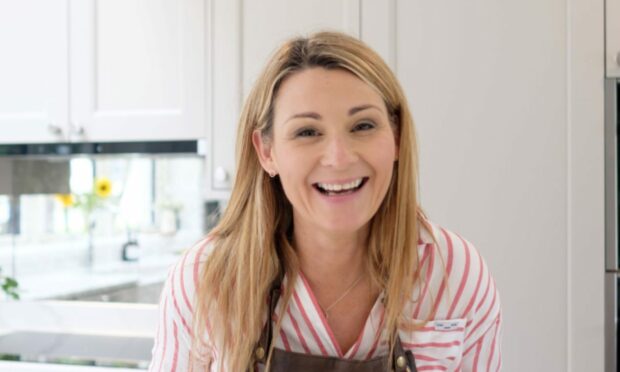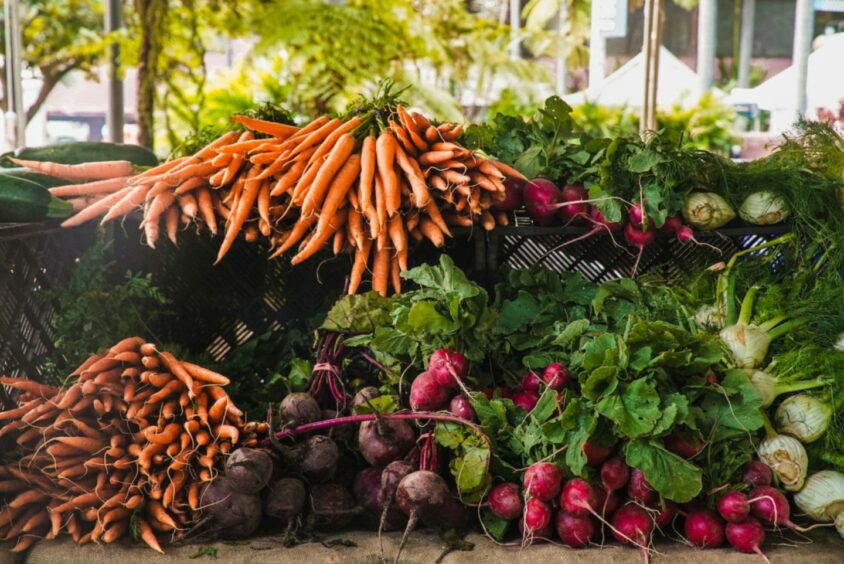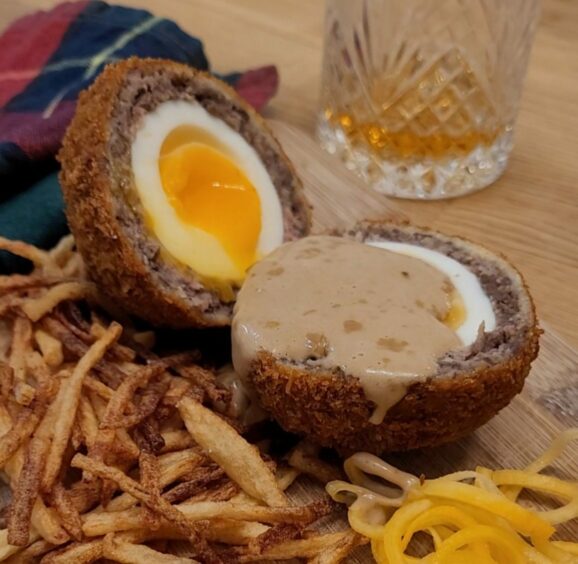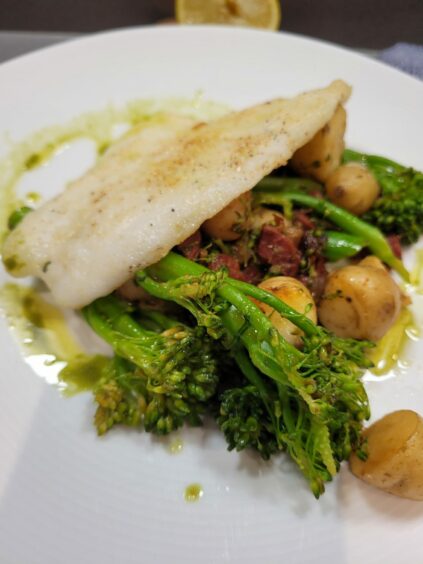Inverness-born home cook and MasterChef finalist Sarah Rankin has a January refresh, makes haggis Scotch eggs and pan-fried hake.
As I emerge from my festive chrysalis, I am less butterfly and more caterpillar. A little slower, more tired and less colourful than I’d like.
I find the best way to counter that is to get into the kitchen and start cooking. I clear the decks and start planning menus and meals for a winter month that will not tolerate cracking open fizz at 11am, or having a selection box for your breakfast. More’s the pity.
And while I do enjoy the sense of renewal that January brings, I absolutely refuse to conform to the “New Year, New You” nonsense peddled by meal replacement firms and diet companies.
Instead of seeing this time of year as a hurdle to get through until the green shoots of February arrive, I prefer to think of January as time well spent on a repertoire refresh.
New dimensions
Endeavour to switch one meat meal for one using a different protein perhaps, or challenge yourself to buy a vegetable you haven’t cooked with before or a grain or pulse you are unfamiliar with. Use that to either add a new twist to an old favourite or to create something unique to you.
This is the time to switch out traditionally heavier, denser dishes for lighter but equally comforting meals that are big on flavour but don’t leave you needing a nap.
I’ve been eating a lot of fish in the last couple of weeks. Partly due to the enormous post-Christmas smoked salmon overstock, and partly because I’m craving fresher and less complicated recipes.
Blending any leftover smoked salmon with a handful of dill, some roughly chopped cornichons or capers and a dollop of cream cheese makes an instant pate I often have on a morning bagel. Add a squeeze of lemon juice, or a teaspoon of creamed horseradish to punch the flavour up another notch.
I had opened packs of oak-smoked, lemon and herb, and a lovely Inverawe smokehouse gravadlax and threw them all in together and the results were delicious.
Creme fraiche or mascarpone would work in place of the cream cheese, but make sure you fold those into the blended salmon mixture by hand, as the power of a blender tends to make them split.
My nod to The Bard
Whether you’re attending a Burns Night or just planning an extra slice of haggis on your breakfast butty come January 25, you don’t really get through this month in Scotland without haggis featuring in some form.
The day that haggis bon bons started appearing regularly on pub menus is up there with the birth of my children for me, their spicy, nutty crunch is a thing of absolute beauty.
Those bon bons are what inspired this pimped Scotch egg as a nod to the Bard, rather than the traditional plateful of haggis, neeps and tatties.
Take one medium egg and soft boil for five minutes, then plunge it into cold water with a tablespoon of white vinegar (this will help make shell removal easier).
Set up three bowls; one with seasoned flour, one with beaten egg and another with seasoned breadcrumbs. Whizzed-up stale bread or ready-made panko give the best crisp. Forget the orange dusty stuff of your childhood.
Take 100g or so of haggis, add 1 tbsp water and microwave for a minute – this makes it easier to mould around the egg. Shell your egg, coat it in a little of the seasoned flour then flatten a cooled slab of the haggis in your palm. Gently manipulate the haggis around the egg, making sure there are no gaps or air bubbles. When completely covered, toss in the seasoned flour and egg and repeat. Finally, roll in the seasoned breadcrumbs and chill for 10-15 minutes.
While the Scotch eggs are chilling, make a quick whisky sauce by sauteing half a finely-diced shallot and when softened, adding 2 tbsp of whisky. Let it reduce by half and add in 50ml double cream and a teaspoon of wholegrain mustard. Allow to cook for around four minutes until reduced again, and pour in a tablespoon of whisky. Season well with salt and plenty of fresh ground black pepper. Fry the Scotch eggs in vegetable oil until golden. This should take around 3-4 minutes. Cut in half, drizzle with the sauce and serve immediately.
Burns brunch
You could also switch out the ham in an Eggs Benedict for a thick slice of haggis for a Burns brunch. Top your toasted muffin with that, add your poached egg and pour over the hollandaise.
If you are hosting a brunch to celebrate Rabbie, congratulating yourself on making it through another festive season unscathed, or just cocking a snook at the horror that is Dry January, I’d serve the haggis Benedict or the Scotch egg with a whisky fizz – 60ml whisky, 30ml lemon juice, 15ml sugar syrup shaken over ice and topped with soda water.
However you celebrate the new year and the Bard, remember that all things should be taken in moderation. Moderation included.
Pan-fried hake with potato and bacon
Serves 4
For a more substantial weeknight meal featuring fish, this pan-fried hake with potato and bacon is deceptively simple but is elevated with a delicious herb oil that really makes the fish sing.
Ingredients
- Bunch dill
- Bunch chives
- Bunch flat-leaf parsley
- 150ml extra virgin olive oil
- 2 tbsp plain flour
- Salt and pepper
- 300g tenderstem or purple sprouting broccoli
- 1kg bag miniature potatoes
- 6 slices of smoked bacon
- 1 finely diced shallot
- 1 crushed garlic clove
- 4 hake portions, filleted and skinned
- Lemon
- Butter and oil for frying
Method
- The day before, place all the herbs and oil into a blender and blend very well. Add a half teaspoon of salt and blend again. Place a muslin or cheesecloth over a large bowl and pour the oil into it. Leave overnight in a cool place to strain. Do not squeeze. The next day pour the vibrantly green oil into a squeezy bottle.
- Season your flour, trim and wash the broccoli and wash the potatoes, cutting any larger ones in half. Boil the potatoes and broccoli and set aside.
- Slice the bacon and cook that in a large frying pan, along with the garlic and shallot until crispy. Add the potatoes and broccoli, ensuring they are coated in the cooking juices.
- In another non-stick frying pan, heat a little oil and dust the fish in the seasoned flour.
- Fry for two or three minutes on each side.
- Place the veg and bacon in a pile and lay your fish fillet on top. Pour over any cooking juices from the bacon and then drizzle the oil around the plate and squeeze over the lemon, finishing with a fine grating of lemon zest.
- The herb oil will keep for a couple of weeks at room temperature in a cupboard, and for several months in the fridge. Remember to take it out a couple of hours before you need to use it as the oil can solidify at cold temperatures. Give it a good shake before using. You can mix it with a chardonnay or white wine vinegar to make a lovely dressing, or even fry the fish in it.
- Any combination of soft herbs work, but I think that the freshness of dill and the allium hit of chive are a match made in heaven.



